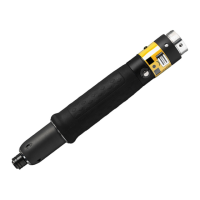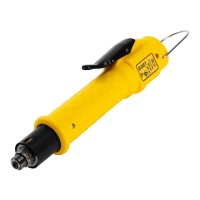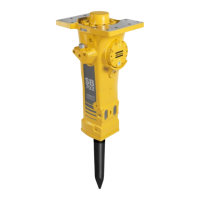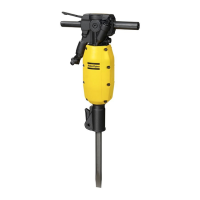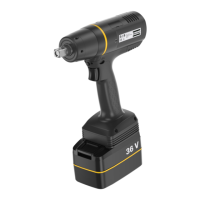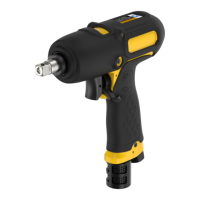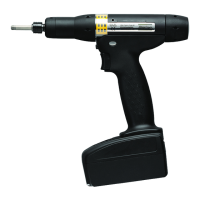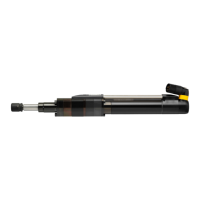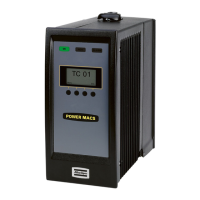
Do you have a question about the Atlas Copco PowerMACS 4000 and is the answer not in the manual?
| Brand | Atlas Copco |
|---|---|
| Model | PowerMACS 4000 |
| Category | Power Tool |
| Language | English |
Provides an overview of the PowerMACS 4000 system, its capabilities, and benefits.
Describes the ToolsTalk PowerMACS software, its features, and user interface enhancements.
Explains the intelligent Tightening Controller (TC) concept, its modularity, and capacity.
Differentiates between PM4000 Tightening and Gauging products and their respective functions.
Guides users through the installation process of the ToolsTalk PowerMACS software.
Details the hardware components and structures of the PowerMACS 4000 system.
Explains the system's configuration, including systems, stations, and bolts.
Illustrates the hardware components and their interconnections within the PowerMACS system.
Describes the functions and components of the Tightening Controller (TC), including PTC and standard TC.
Explains the automatic software update process for TCs, servos, and spindles.
Covers fundamental operations like window management, security, and help features.
Presents the graphical user interface elements of ToolsTalk PowerMACS and their operation.
Details how to access and use the software's help system for assistance and troubleshooting.
Outlines the basic functions available in the File menu for managing setups and applications.
Guides users on starting ToolsTalk PowerMACS in connected or disconnected modes.
Explains how to view system status, stations, and bolts through various displays.
Introduces the Reporter tool for configuring data display and output from the PowerMACS system.
Introduces the procedures for setting up and maintaining the PowerMACS system.
Explains what a setup is and how to create, open, save, and convert them.
Guides users through the process of creating a new system setup using the Set Up Wizard.
Provides an overview and navigation tool for all functional parts and hardware in the system.
Details the configuration parameters for setting up a station within the system.
Explains how to set up and configure spindle parameters for optimal operation.
Describes how to configure and manage Input/Output devices for digital signals.
Details the setup and types of ID devices used for workpiece identification.
Guides on configuring the Assembly Overview display, including data and layout settings.
Details how to define parameters available from the PowerMACS PLC.
Explains how to configure the SRAM settings for cycle data storage.
Covers setting user preferences like language, torque units, and trace sample counts.
Describes how to perform setup tests to detect errors and warnings.
Explains how to export and import setup tables for re-use and data transfer.
Details how to copy table instances between different instances of the same type.
Covers managing setup data, including backup and replacement of TCs.
Outlines various maintenance functions for checking system status and troubleshooting.
Explains how to configure TCs, download software, and manage IP addresses.
Provides an introduction to the PowerMACS PLC, its programming, and interface.
Details the primary assignments and interfaces of the PowerMACS PLC within the system.
Explains the interface variables between the PLC and the tightening controller.
Guides users on creating and editing PLC programs using the PowerMACS PLC editor.
Describes the PLC Console interface for displaying and modifying PLC program data.
Explains how to define and change parameters accessible from the PowerMACS PLC.
Details how to check the status of PLC runtime kernels when the system is online.
Introduces the functions for creating and editing tightening programs.
Guides users through the creation of a new tightening program using a wizard.
Explains the form used for creating and editing tightening programs, including steps and sequences.
Details how to set up the mode table, defining programs for bolts in different modes.
Defines the algorithm for tightening a bolt, including common settings, steps, and bolt monitoring.
Covers general properties for programs, including common settings and user variables.
Explains the Control part of a step, defining its main task and parameters.
Details how to set up restrictions that can interrupt a running step.
Explains how to define checks for measuring step-level variables and testing against limits.
Describes the Reject Management (RM) function for automatic repair of failed steps.
Covers parameters for speed ramping and other step options like start delay and stop method.
Explains how the monitoring function examines the result of a whole tightening cycle.
Details the check for Peak Torque within specified limits.
Explains how to check the angle within specified limits.
Details the check for Torque Rate, the ratio of torque versus angle.
Covers monitoring checks for yield point torque and angle.
Defines the possible statuses for stations and bolts, indicating success or failure.
Lists variables providing information about the station during tightening.
Details variables related to the results of individual bolt tightening operations.
Lists and explains the error codes that can be reported for bolt results.
Lists and explains the warning codes that can be reported for bolt results.
Details variables that are reported for each individual step in a tightening cycle.
Explains the stall protection mechanism for servos and spindles to prevent damage from overload.
Introduces Statistical Process Control (SPC) and its setup within PowerMACS.
Explains the purpose and functionality of SPC for judging process stability and capability.
Guides on configuring the SPC function, including data collection and calculations.
Covers defining automatic end-of-shift reports and configuring shift periods.
Introduces peripheral devices used for information input/output in a PowerMACS system.
Details the process of adding peripheral devices to the PowerMACS system.
Explains how to check the status of devices within the PowerMACS system.
Covers standard accessory devices like Stacklight, Indicator Box, and Operator Panel.
Explains the use of I/O devices for digital input and output signals communication.
Describes how to read cycle data from the PowerMACS PLC and configure the PLC device.
Details the setup and types of ID devices used for workpiece identification.
Explains how to report cycle data and traces to an Atlas Copco ToolsNet server.
Covers various Ethernet protocols like Open Protocol, Profibus, DeviceNet, etc.
Explains how to interface with PowerMACS systems using fieldbus slave modules.
Details the serial communication protocols supported by PowerMACS.
Describes the API for accessing PowerMACS TC data from custom applications.
Explains how to interface with GM DeviceNet devices for control and data acquisition.
Details the types of process data (cycle, traces, events, setup) and their access methods.
Provides a comprehensive list of system events, their codes, types, and severity.
Defines key terms and concepts used throughout the document for clarity.
